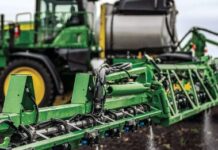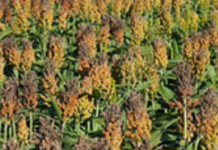As reported in High Plains Journal. Marketing options are really about putting the value of feeder cattle from a genetic standpoint in to the price equation, according to Troy Marhall, the director of commercial industry relations for the American Angus Association.
Marshall believes this kind of “revolutionary change” is needed in the beef industry, but first one must understand what some of the trends are and what’s going on with the markets.
“You have to change because the industry is changing so rapidly,” he said. “But I do think the industry has changed at such a pace right now that we all want to make sure that we’re positioning ourselves to be sustainable.”
When it comes to the current cattle market, Marshall called it a tale of two markets, using the Charles Dickens quote, “It was the best of times, it was the worst of times. It was the age of reason, it was the age of foolishness. It was the spring of hope in the winter of despair.”
Marshall thinks that by looking at the cattle industry right now, in the short term, it’s facing several challenges. There’s the political environment at the national level.
“All the stimulus money and the movement towards environmental—all these different things that we’re seeing here, we’re going to see some pressures where we have some concerns,” he said. “I don’t know how that’s all going to shake out in the marketplace but there’s certainly that going on.”
And then there’s COVID-19, and the recent surge. And the packers unprecedented profits.
“But we set those things aside, I’m actually very, very bullish for the industry and when I look forward and I think the next three to five years we’re in for some actually very good times,” Marshall said. “When you look from a supply standpoint we had reduced cow herds in ‘19 and ‘20 and again in ‘21. So we’re moving in the right direction from a supply standpoint.”
What really excites Marshall is the demand equation. The supply situation changed because of COVID and now as the restaurants pick back up—and hopefully stay open despite recent surges—changed the way beef was handled.
“For that time frame where everybody was trying to make up for lost time,” he said. “We just had a lot of latent demand that’s coming back there, we’re seeing that in the export market as well.”
Plus with people stuck at home they learned to cook again and prepare all the different cuts.
“I think from both the supply and demand standpoint, we’re looking at some pretty good times from a cattle producer stand point,” he said.
The demand for high quality beef continues to grow, and cattle producers have worked to improve genetics and the Angus Association has worked to bring incentives to producers. For example, in 2006, there was about a 14% Certified Angus Beef acceptance rate. By 2020, it had reached more than 36% acceptance.
“We’ve done a tremendous job of changing that,” he said.
Marshall said it’s all about being able to better serve customers. Cattle producers are essentially in the customer service business, and they must do the work on the backside in order to keep improving the product they bring to consumers.
“All of us, as producers we tend to think that, well were going to get the test and don’t have time when get them sold,” Marshall said. “That’s where the process ends and we actually get started on next year’s calf crop.”
But a deeper look shows the value isn’t realized for those calves until they make it through the feedyard and end up on a consumer’s plate. The various genetic scorecards and programs give the customer or whoever buys the cattle more market access, flexibility and knowledge to better manage those cattle. Angus Link is one program that’s really more than just the dollars and cents to the producers.
Marshall said Angus Link was called such because it was conceptually designed to link the seed stock producer with the commercial cow-calf producer with the feedyard, packer, and ultimately with that golden link—the consumer.
“I think going forward in the cattle industry and I’m optimistic about where we’re headed in the next three to five years, we are in a very competitive business,” he said. “As producers we need to do everything we possibly can to differentiate our cattle in the marketplace.”




